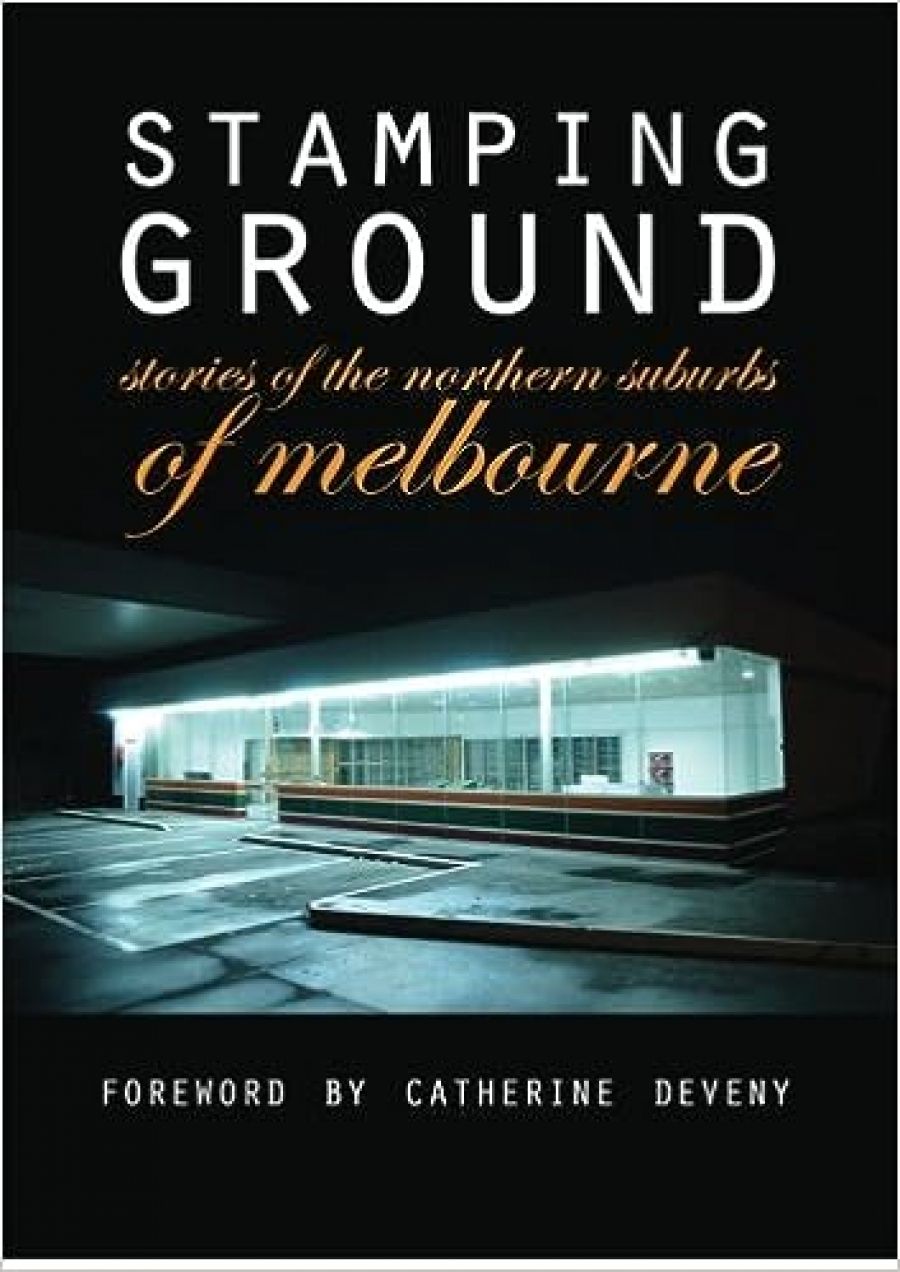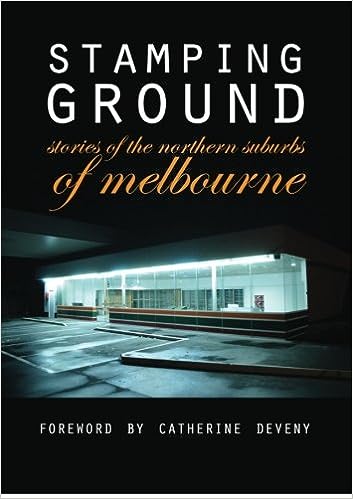
- Free Article: No
- Contents Category: Short Stories
- Review Article: Yes
- Article Title: On the town
- Online Only: No
- Custom Highlight Text:
I have lived in Melbourne’s northern suburbs for almost a decade. I am also an aficionado of Australian literature. Thus, I was interested to read Stamping Ground, a collection of writings about my favourite side of the Yarra River.
- Book 1 Title: Stamping Ground
- Book 1 Subtitle: Stories Of The Northern Suburbs Of Melbourne
- Book 1 Biblio: Clouds of Magellan, $20 pb, 159 pp
- Book 1 Cover Small (400 x 600):

Stamping Ground has been expertly edited by Gordon Thompson. No sentences read awkwardly or seem overlong. The prose featured throughout the book is wonderfully evocative. A personal highlight was Tiggy Johnson’s poem ‘Coburg High’. Johnson recalls her days as a student, ‘running around Pentridge for PE warm-up’ and ‘walking up Bell Street … after school’. Johnson’s poem concludes in the present day:
You cruise through a new set of traffic lights
and five blocks before you’ll pass
you prepare the kids to catch a glimpse of the house where you used to live.
Johnson nicely suggests the way in which a suburb can become suffused with memories. This is something all readers will relate to, regardless of where they live. Johnson never wallows in nostalgia, though she displays a touching fondness for a part of her life that is now long gone. Her sparse writing style supports the old maxim, ‘less is more’.
I thoroughly enjoyed Mark Wills’s poem ‘Terrace Fever’. Wills amusingly evokes the gentrification of Melbourne’s inner north. He writes that many of the ‘old Greeks’ have ‘gone to God’ and their properties have been re-vamped by ‘latte couples’. Fortunately, though, these ‘latte couples’ have not been able to transform every section of Melbourne’s north. Witness the descriptions of the grungy, multicultural Preston Market that appear in Jenny Sinclair’s short story ‘Vesuvio’s’; and Jaz Stutley’s account of the laneways in Thornbury. According to Stutley, these laneways are dotted with ‘rustling paper’ and they ‘stink of cat-spray, wet wood’.
The foreword by Catherine Deveny is disappointing. Deveny has demonstrated a quick wit and astute observational skills in her media articles. In Stamping Ground, she recalls growing up in the outer suburb of Reservoir during the 1970s and early 1980s. Deveny notes that ‘you can take the girl out of Reservoir all you like but you can’t take the Reservoir out of the girl’. Yet she includes lines such as the following:
You know the Big Banana and the Big Pineapple? Back then we had the Big 12-year-old Single Mother with Tatts and Crabs. You should have seen the Mayor cut the ribbon at that opening as Davo, Ferret and Wanger all yelled, ‘Root her! We all did!’
These moments perpetuate crude gender and class-based stereotypes. Readers are left to wonder whether Deveny’s affection for Reservoir stems from the fact that this area gives her something to poke fun at. Deveny’s piece may be compared with Angela Costi’s contribution. Costi’s account of living in Reservoir and the nearby suburb of Lalor is far less smug and patronising than Deveny’s piece, and much more subtle.
There are some other weak moments. Mileta Rien’s short story focuses on the live music scene in Melbourne’s inner north. This scene has made headlines recently with the threatened closure of the popular Collingwood rock venue The Tote. Rien is to be commended for her choice of topic. Unfortunately, her piece contains far too much dialogue. Apparently, it is the first chapter of a ‘novel-in-progress’. I felt as though I was reading a film script.
There is an admirable emphasis on the migrant presence in Melbourne’s north. Examples include the contributions by Naomi Byrne-Soper and Georgina Scillio. Byrne-Soper focuses on a Greek couple named Georgetta and Theophilus, particularly the latter’s negative attitude towards the Asians who work near his Preston shop. Scillio writes movingly about her experience as a Maltese immigrant and about her relationship with the troubled elderly Anglo-Saxon woman who lived next door to her.
Perhaps due to the text’s brevity, some other social groups are given minimal attention. Little is said about the strong Aboriginal presence in the northern suburbs. There are many student share-houses in Melbourne’s north, and a number of universities, though students appear only fleetingly in these pages. The vibrant gay and lesbian (or ‘queer’) constituency in this area is also largely overlooked.
As a whole, Stamping Ground is a terrific homage to Melbourne’s northern suburbs and the literary talent that bubbles away within them. The text has its shortcomings, but it contains plenty of compelling writing. Reading this book, I felt that I was (to paraphrase The Go-Betweens) running around, up and down, through the streets of my town.


Comments powered by CComment